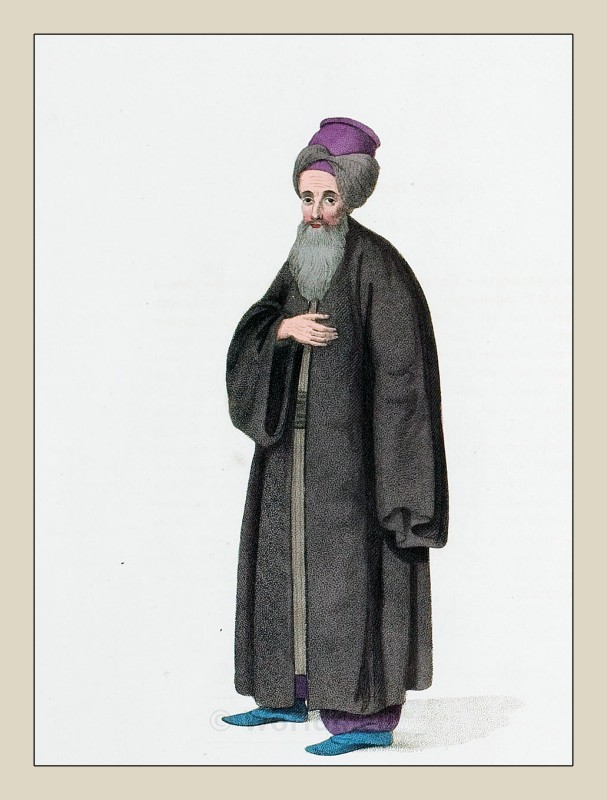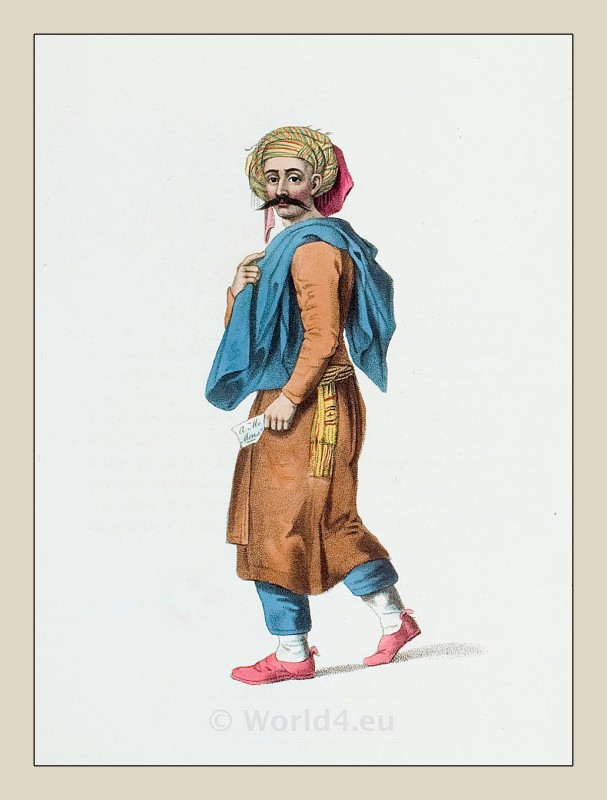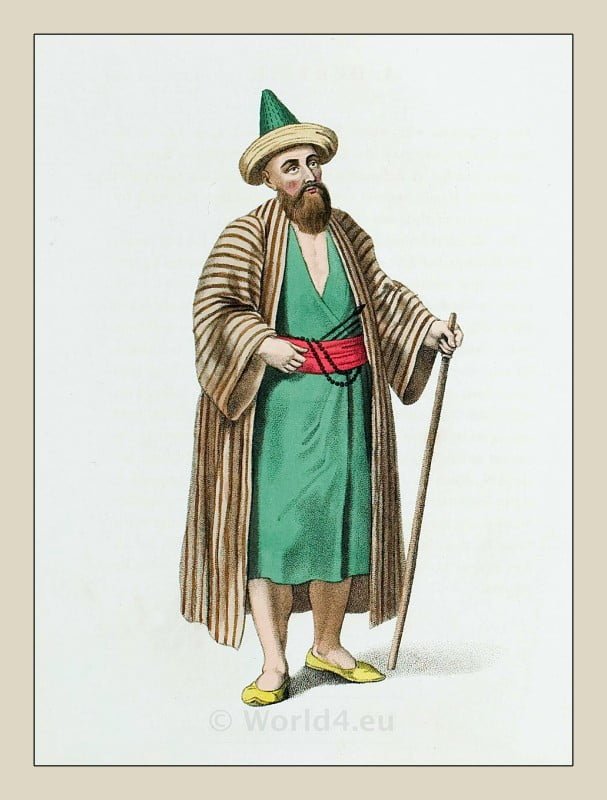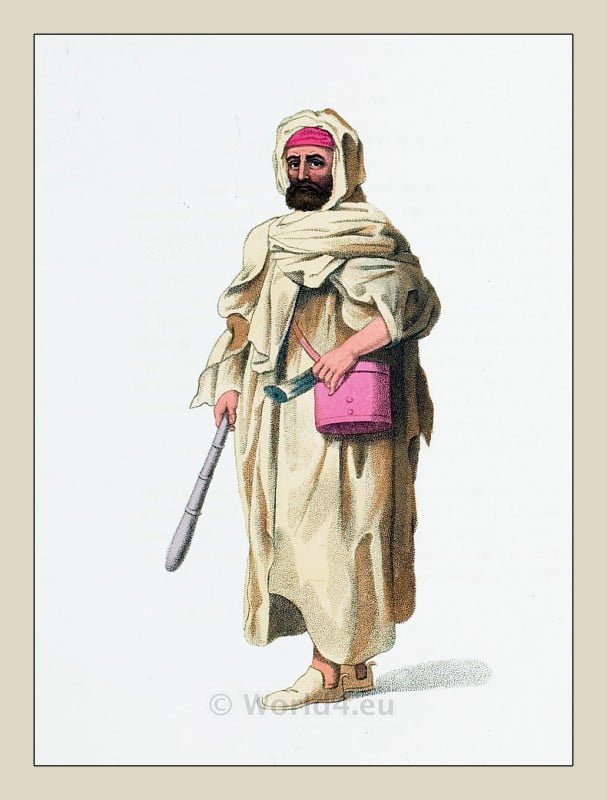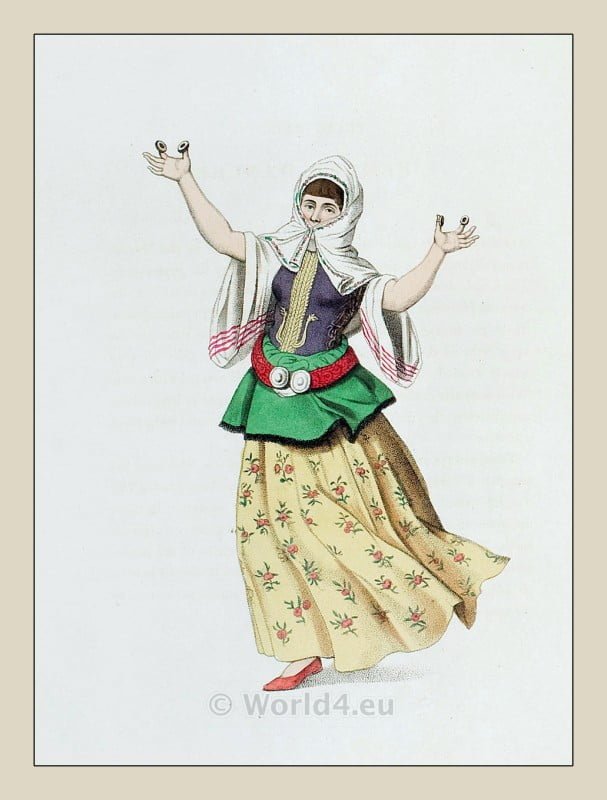An Albanian, Shqiperia during the Ottoman Empire in 1800.
Jewish citizen of Constantinople. Ottoman Empire 1800.
In no country do the persecuted Jews enjoy more privileges than in Constantinople.
An Ottoman Empire Bosniac. Inhabitant of Bosnia. 19th century.
Inhabitant of Bosnia. The national character and costume appear essentially different.
Traditional Arabian Women from Cairo. Ottoman Empire.
AN EGYPTIAN ARAB. Arabian Women from Cairo. Ottoman Empire.
An inhabitant of the coast of Syria. Historical Syrian costume.
THIS Plate, which represents the dress of an inhabitant of the coast of Syria, is also very similar to that worn by the Asiatic Janissaries.
The different orders of Dervishes. The number of these societies.
The different orders of Dervishes (Sufi) originated in the two sects of Ebu Bekir and of Ali. Their followers took the name of Dervishes, a Persian word, which means the sill or threshold of a door.
A Bedouin Arab in the vicinity of Alexandria. Ottoman Empire.
THIS singular body of Arabs never inhabit any town, but constantly live under tents.
A muslim female dancer at Constantinople. Ottoman empire.
Music and dancing are forbidden by the Islamic religion, these amusements are tolerated by the government.
A young turkish prince, heir to the throne.
This plate is a portrait of one of them, who will succeed to the throne.
Ottoman Empire. Two Janissaries in their dress of ceremony.
Each Janissary has a certain indelible symbol marked in the flesh of the arm by means of gunpowder, to shew the Odah, or regiment, to which he belongs.

